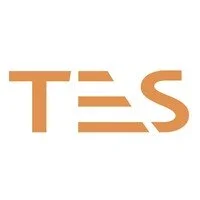PICOP Person In Charge of Possession
Initial / Recert
Course Summary
This course is designed to train persons who have been nominated by their line manager/sponsor to enable them to attain the Person in Charge of Possession (PICOP) competence.
The PICOP competence is required to be held by anyone who is required to set up and manage a possession for the purpose of undertaking engineering works on the rail infrastructure and includes the management of single train movements within the possession.
The PICOP course will take delegates through the procedures as set out in the Rule Book; Handbook 11 (Duties of the person in charge of possession), Handbook 12 (Duties of the engineering supervisor) and Handbook 13 (Duties of the person in charge of the siding).
The course includes the importance of using the correct communication protocols and adopting the appropriate behaviours to be able to carry out this role safely and effectively.
Course Aim
The aim of the course is to provide delegates with the skills and underpinning knowledge required to undertake Person in Charge of Possession duties in line with the Person in Charge of Possession unit of competence.
Pre-requisites & Requirements
Additional Information
Following successful completion of the PICOP Initial training, candidates will enter into a 4 month probation period (P) whereby the sponsor is responsible for mentoring them. The mentoring must be logged in the PICOP Work Experience Log Book for the candidate to be eligible for further assessment. Within this period, the candidate must have undertaken an Initial PICOP Assessment with an approved training provider.
All PPE must meet the requirements of NR/L2/OHS/21 and RIS-3279-TOM and as a minimum be equipped with:-
High visibility upper body clothing with reflective tape, with Sentinel Sponsor Logo
High visibility lower body clothing with reflective tape
A safety helmet with Sentinel Sponsor Logo
Safety footwear to support ankle and protective toe cap
Suitable safety eyewear
Suitable safety gloves
What Does a PICOP Do?
The Person In Charge Of Possession (PICOP) is one of the most senior and accountable roles in railway operations, holding ultimate responsibility for the safe and efficient management of a rail possession. A possession is a formally agreed-upon block of time and track where all train movements are suspended, allowing engineering works to take place. The PICOP is the single point of contact for Network Rail and the ultimate authority on site within the boundaries of that possession.
What is a PICOP?
A PICOP is a highly experienced, competent, and formally appointed individual who takes overall control and responsibility for a railway possession. They are the designated railway safety lead for that specific area and time, responsible for ensuring that the possession is taken correctly, safely managed throughout the work period, and handed back to Network Rail on time and in a safe condition. They oversee all activities, protection arrangements, and personnel within the possession.
Key Duties and Responsibilities of a PICOP:
The PICOP's role demands exceptional leadership, meticulous planning, impeccable communication, and the ability to make critical decisions under immense pressure. Their duties typically include:
Accepting the Possession: Formally taking control of the designated section of line from the Network Rail Signaller, ensuring all lines are clear of trains and protected according to the plan.
Overall Safety Management: Being ultimately accountable for the safety of everyone working within the possession. This includes ensuring all Safe Systems of Work are implemented and adhered to.
Coordination & Communication Hub: Acting as the central point of contact for all activities and personnel within the possession, coordinating multiple work groups, plant movements, and specialist teams.
Authorising Work: Granting permission for work groups (led by COSSs or Engineering Supervisors) to enter and commence work within the possession limits, once all safety measures are in place.
Liaison with Network Rail: Maintaining continuous communication with the Network Rail Signaller and Control, providing updates on work progress, and managing any operational changes.
Incident Management: Leading the response to any incidents, emergencies, or unforeseen challenges within the possession, ensuring safety is maintained and issues are resolved efficiently.
Managing Rail Traffic (within possession): Overseeing the movement of all engineering trains, Road-Rail Vehicles (RRVs), and other on-track plant within the possession limits (often supported by Protection Controllers or Hand Signallers).
Monitoring Progress & Adherence: Ensuring work progresses according to plan and within the allocated time, and that all personnel comply with safety and operational rules.
Handing Back the Possession: Formally relinquishing control of the line back to Network Rail once all work is complete, the line is clear, and infrastructure is safe for train movements.
Where a PICOP can work within TES:
The PICOP competency is the pinnacle of site operational management within TES, essential for delivering large and complex rail infrastructure projects. PICOPs are integral to:
Possession Management: This is the core department where PICOPs operate, planning, executing, and overseeing major possessions for all types of railway works.
Major Project Delivery: Leading the on-site operational aspects of significant P-Way, Electrification, Signalling, or civils projects that require extensive track access.
Operations Management: Senior PICOPs may transition into strategic operational planning and management roles, overseeing multiple possessions and work programmes.
Estimating & Planning: Providing critical input on the feasibility, logistics, and safety requirements for large-scale tenders and project plans.
Let’s Learn Together
Interested in our NSAR Gold Standard team training your staff?
Fill out some info and we will be in touch shortly!
We can't wait to hear from you!
Explore more of TES
Want to explore more of what TES have to offer? Use the search function below

